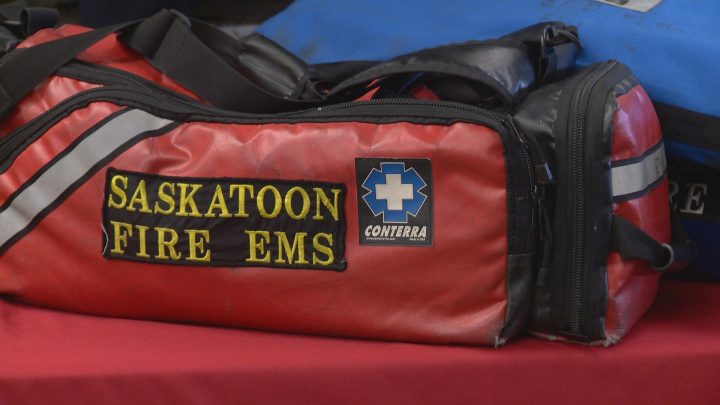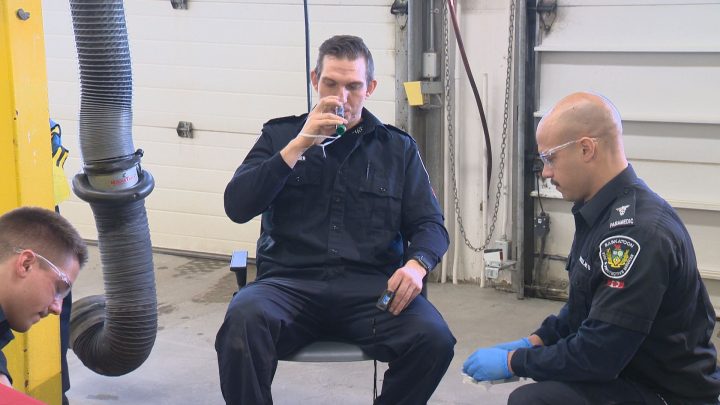The Saskatoon Fire Department (SFD) is approaching 30 years of providing emergency medical response service in the city.

It first introduced emergency medical technicians (EMT) in 1990 and now has more than 140 firefighter-primary care paramedics at nine stations throughout Saskatoon.
“We made the choice to upgrade to the primary care paramedic level.”
The decision also enabled them to upgrade their skill-set.
“Allows us to do much more significant things as we were as an EMT,” Protz said.
“It goes with medications involved, starting intravenous lines, using a device called a king airway for airway management — those are quite significant for us.”
Treatment and medications administered by a firefighter-paramedic have expanded over the past three decades, according to the SFD.

Get daily National news
Notably, with the introduction of automated external defibrillators (AEDs) in the 1990s and naloxone kits in 2017.
Medications include dextrose for hypoglycemic diabetic emergencies, epinephrine for allergic reactions and bronchodilators for people in respiratory distress.
A week ago, the SFD added Penthrox to its list of resources.
The fast-acting, gaseous, painkiller is used for trauma patients experiencing moderate to severe pain.
“In a situation where somebody is not able to move, having the ability to be able to give something that’s a non-opioid — to reduce the pain,” Protz said.
He described the situation as the “hot zone” — an area where it may be unsafe for a first responder to go in to and where protective equipment is needed.
“In some circumstances where there’s a collapse, or inside of a vehicle where someone needs to be extricated from,” he explained.
Protz noted they’ve used Penthrox once since getting it.
So far this year, the fire department has received roughly 14,000 calls, with about 40 per cent requiring emergency medical care. These figures don’t include non-emergent responses.
“Increasing population, as well as our increasing seniors’ population,” Protz said.









Comments